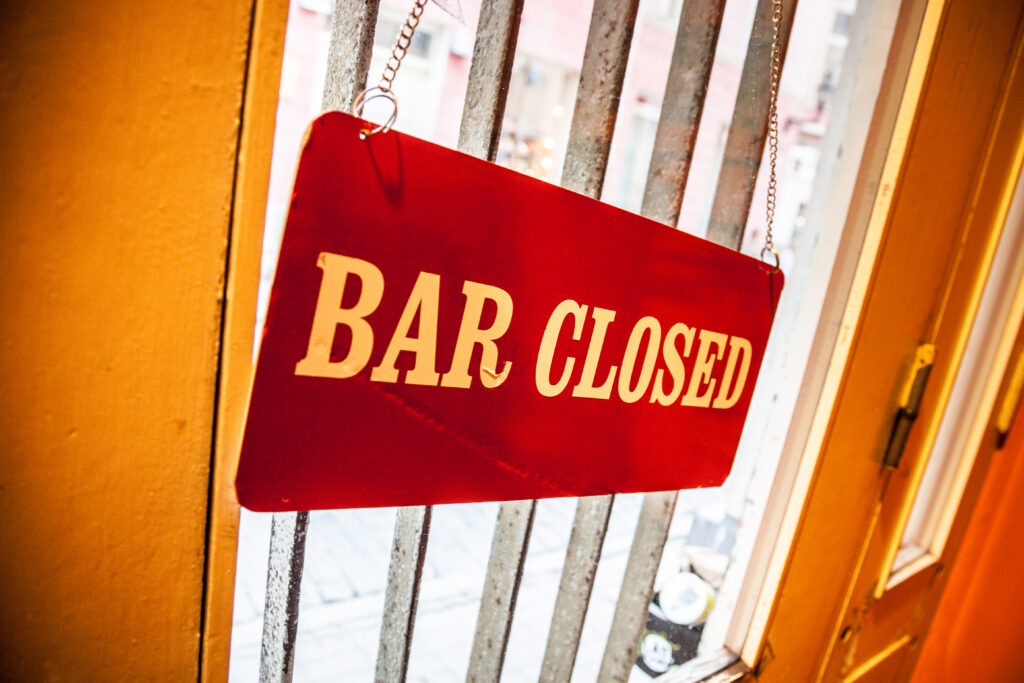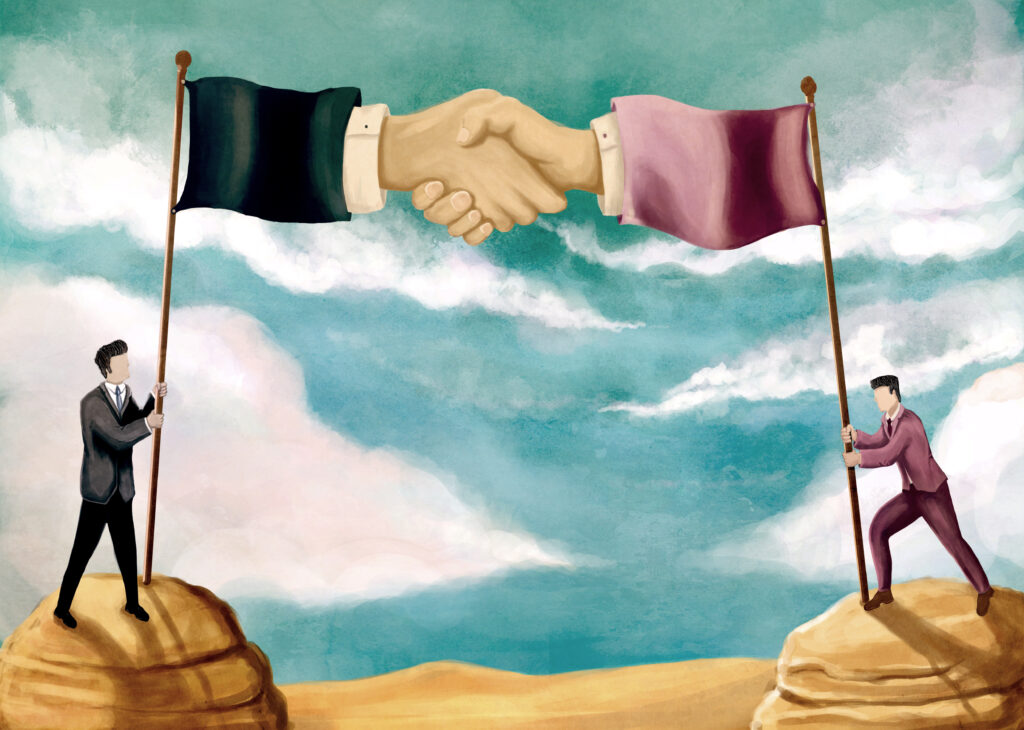
Reporting from the Eaton Fire

In this podcast episode, Leader's Edge interviews our own Russ Banham on his March cover story on natural disasters and the recent California wildfires.
A Los Angeles County native, Banham himself was forced to evacuate his home with his family as the Eaton Fire edged toward his neighborhood in January. After the fire was contained, Russ was able to return to his neighborhood and house, still intact. He shares his personal experience and details from his reporting.
Read the Transcript
Disclaimer: Podcast transcriptions are computer generated, please excuse errors. For the most accurate version of the conversation, please refer to audio.
Russ Banham: First thing I saw when I got out there, the skies are orange, it’s dark, and I had a flashlight and I could see down the block, and as we’re loading up the cars, the air raid sirens in our town sounded. I mean, it was like the London Blitz. Fear is cascading through your body as you’re doing all this, and you see your neighbors and everyone’s quiet and they’re dutifully going about and the same tasks that were performing. Then it became a matter of where do we go?
Zach Ewell: Welcome to the Leader’s Edge podcast. I’m Zach Ewell, content producer here at Leader’s Edge. As many of our listeners are aware, several highly destructive fires have plagued the Los Angeles metropolitan area this year. Between the Angeles National Forest and the waters of the Pacific Ocean, wildfires have devastated communities, driving out families and businesses from their neighborhoods. According to California’s Department of Forestry and Fire Protection, between the Palisades and Eaton fires, over 37,000 acres have been burned, more than 16,000 buildings have been destroyed, and 29 people have passed away. The devastation of these fires has a direct impact on the availability of insurance coverage that can be accessed by members of these communities. Our cover story for March’s issue focuses on property premiums and a lack of access to coverage in disaster prone regions.
In this podcast, I talk with the author of this article, Russ Banham, a past movie actor and Pulitzer nominated journalist. Unlike some of his other stories that he’s written for Leader’s Edge, this topic was personal for him. A native to LA County, Banham himself was forced to evacuate his home with his family during the Eaton fire, which edged towards his neighborhood. After the fire was contained, Russ was able to return to his neighborhood and house, still intact. He shares his personal experience and details from his March cover story. Russ, it’s great to hear from you. Before we jump into the news surrounding the LA county wildfires and the story you’re currently writing on the ground there, I wanted to ask about your experience with these fires. You live in La Cañada Flintridge, just located south of Angeles National Forest, and more specifically, you’re located just west of Altadena, which has been decimated by the Eaton fire. First off, how are you doing?
Russ Banham: Well, much better now since the rains and the cold came in. It was, you know, pure terror for many days. On January 7th. Well, let’s go to January 6th, actually. There’s this app called Watch Duty and it’s a literal lifesaver and we’d been warned, and had been for several days preceding, of extreme fire danger on January 6th. The app is a ready, set, go-type of warning device. It put us on “Ready,” and what that basically meant is, keep in mind something may happen, you may need to start packing. “Set” is pack, get everything packed, which is a tough decision to make. We have two cars, two dogs, a cat and, a daughter home from college, so get all that ready. Then “Go” is the fire is nearby. On January 7th at 4:58 in the morning, the app literally does this: “Go, go, go.”
We started loading up the cars. The first thing I saw when I got out there, the skies are orange. It’s dark, but the skies are orange. I had a flashlight, and I could see down the block and La Cañada Flintridge is one of 50 cities in America that’s called a tree city. I could see tree branches littering the street going down the hill. I should mention that when you walk out our front door, we are across the street from the Angeles Forest. Across the street is a line of houses, their backyards face one of the hills into the Angeles Forest. As we’re loading up the cars, the air raid sirens in our town, which is only 12 minutes from LA proper by car sounded. I mean it was like the London Blitz, and you know, fear is cascading through your body as you’re doing all this, and you see your neighbors and everyone’s quiet and they’re dutifully going about the same tasks that we were performing.
Zach Ewell: Wow.
Russ Banham: Then it became a matter of where do we go? We couldn’t go to the east because that was the Eden fire. Couldn’t go to the west because that was the Palisades fire. Couldn’t go to the north because that’s the mountain, so we just kept driving south. Just kept driving and driving until there was no smoke. We found ourselves 50 miles south in a place called La Mirada, where my son’s mother-in-law had a house. We all regrouped there. Our oldest daughter and her family had to evacuate from Pasadena. Our son and his family had to evacuate from Glendale. The entire family was there in La Mirada. Then we holed up in a hotel for four days in a place called Hawaiian Gardens. It sounded kind of tropical, and the hotel by the end of that day was filled with evacuees and their pets.
Zach Ewell: Wow. That’s terrible. I’m so sorry. That’s very scary. Some of these images that I’m seeing coming out of LA, just heartbreaking. I have several friends in the city that I’ve been checking in on and it’s such a beautiful area too. I love California, so, my heart goes out. It seems like you’re back, though, at your residence, right?
Russ Banham: Yeah, we got back. We were in the hotel for four days. It was pretty crammed. That’s where the fear sets in because you’re watching on television, live, the devastation, and broadcasters are interviewing people who’d lost their homes. That’s a horrific experience to see people despairing, particularly older people, retirees who own their homes outright and, in some cases, as I learned in reporting the story, are likely to be underinsured in this era of inflation, given the costs of repairing damaged homes. Even uninsured, I was shocked to learn how many people in America have no insurance covering their homes.
Anyway, it was day-to-day. We got back to the house, and we had no power for two days, and that was okay, we could live with that. We dressed in our woolen sweaters and used flashlights and all that. But there were two or three more times where it was reported by the app that we would get extreme winds again, 50-60 miles an hour. Our hopes hung on a shift in the wind. If the wind shifted to the west as opposed to southwest, we’d be in danger since we’re due west of Altadena, so that was hard. Finally, the rains came. The twisted irony is had it rained just a few days before January 7th, and the winds came, I don’t know if we would have seen these fires, certainly not the intensity.
The Insurance Institute for Business and Home Safety just reported that they did an analysis of drought conditions in Los Angeles County. In December, there was no drought, but by January, something like 60% of the county was under drought conditions, and that’s because there was just no rain. We haven’t had rain here since March of 2024.
Zach Ewell: Wow. Since last year. That’s crazy. I have one question going into that direction, and then I’d like to ask you about your story afterwards. But as of us having this conversation, the fire which has threatened your neighborhood is currently considered the second most destructive in California history with 17 deaths, and as of reporting this, over 9,000 structures destroyed. Meanwhile, just 25 miles away, the Palisades fire jumped from being California’s fourth to third most destructive wildfire over the past weekend with 11 deaths and over 6,000 structures destroyed, as of right now.
To put these wildfires even more into perspective, 10 of the past 15 most devastating wildfires have all taken place within the past 10 years in California, according to the California Department of Forestry and Fire Protection. Now, that’s very concerning. It would be premature to allocate all of these fires as a result of one cause. However, from your perspective, is it safe to say that there are several contributing factors to these destructive wildfires from being more prominent, some of which you’ve talked about already, these being, wind, climate change, forest management, and poor company supervision of properties. Does that all coalesce?
Russ Banham: Well, certainly climate change is the most unique factor, but not alone. As we’ve learned in this fire in Los Angeles County, both fires, an ember can travel in 60 seconds, one mile. One mile in 60 seconds. So, this idea of the wildland urban interface being the region where the fires will occur, while true, the fires don’t end there. What happens, and as we saw in particularly the Eaton fire and the Palisades fire when it went into Malibu and nearly went to Brentwood, is that those embers fly miles away and they set another area on fire, another neighborhood on fire, and then they could blow again two or three miles away and set another neighborhood on fire. We saw that with those half dozen fires at the same time.
Certainly, the city’s misaligned budget priorities factor into the extent of the firefighting resources and I have nothing but great praise for them. We had 3,600 firefighting personnel in fighting the Eden fire next to us, but the fact that the firefighting budget was reduced, that has to be taken into account. You have to look at human settlement over the last century and even sooner than that. In Los Angeles, the population has grown 60% since 1960. You’ve got my home, for example, built 75 years ago, and all the houses in this neighborhood where we live 75 years ago, and older than that, we live in an affluent neighborhood just north of downtown Seattle and Los Feliz, Griffith Park, all that. These are older houses that have been here for some time, and we’ve not experienced much in the way of fire other than the station fire 15 years ago. Firefighting personnel were able to divert that from La Cañada Flintridge into the mountains, but it then entered La Crescenta, which is due west of us, and took many homes there.
Last, if you think of this as an insurance crisis as well, because that’s what it is, we’ve seen numerous insurers leave the state over the last three, four years. State Farm and Allstate stopped writing policies, stopped renewing policies, Farmers temporarily stopped renewing policies, and they did that because of Proposition 103. I guess that’s 1985, and that disallowed insurance companies from using reinsurance, or at least calculating reinsurance, into their premiums as a cost. Secondly, using catastrophe models in their underwriting and pricing. There’s some truth to all those factors, not just climate change.
Zach Ewell: Can we dive now into the story that you’re currently working on? As I understand it, you’re reporting on the impacts of these fires to specific neighborhoods throughout LA?
Russ Banham: Actually, Sandy Laycox, the editor, she must have great foresight. Sandy assigned me an article to look at the impact of natural disasters on socioeconomically disadvantaged homeowners and small businesses. These would be people living at or near poverty and the small businesses that generally serve those areas of the country. I’d been doing the reporting, or I should say the interviews, for about two weeks when the fire struck. I continued to do those interviews. As I mentioned briefly, some of the studies that just came out in December and January painted a really bleak picture. 65% of homeowners in the United States are underinsured, meaning they can only afford so much coverage, so, they have to take on very high deductibles and reduce financial limits of protection. This is amazing too, 10.5% of homes in California, just California, are uninsured.
Zach Ewell: Wow.
Russ Banham: That’s more than 1 in 10 homes that have gone bare, with no homeowner’s insurance at all. When you think about that, the rising frequency and severity of wildfires in California, the risk that these individuals are taking on, and in many cases, they have few alternatives. In the article, I quote someone, because I asked her, I said, “Why?” She said, “Well, they think it’s not going to happen to them, and if it does happen to them, the damage will be minimal, and FEMA will take care of them.” But FEMA only provides $43,000 in grants. I don’t think you could replace a trailer home for $43,000, so, that’s a pretty sad state of affairs for California.
Zach Ewell: Sure.
Russ Banham: I also learned rural homeowners are more likely to be uninsured than homeowners in general. Homeowners earning $50,000 a year, twice as likely to have no insurance compared to other homeowners. Altogether, and this is a study by the Consumer Federation of America, and this study just came out, $1.6 trillion of US home property value across the country is uninsured.
Zach Ewell: Wow.
Russ Banham: Now that is an economic catastrophe waiting to happen.
Zach Ewell: What were you hearing from the people you talked to?
Russ Banham: I did not interview anyone who was uninsured for the catastrophe, but my wife, who’s a schoolteacher, one of her colleagues, also a schoolteacher, has a close friend who lost her home in Altadena, and she had no insurance. I did get information from my wife, through that other schoolteacher, that she just thought it would never happen to her. She just didn’t imagine it and she’s completely distraught, not knowing what to do next.
Zach Ewell: Yeah.
Russ Banham: A related insurance issue that I didn’t mention, that might be of interest to your listeners, is the FAIR Plan in the state. The FAIR Plan is a property insurance market of last resort. There are 35 of them in the United States right now. In the California FAIR Plan, over the last couple years, the number of homeowners that have had no resort other than to find property insurance in the farm market has skyrocketed, primarily because of all those insurers that pulled up stakes and decided not to renew their policies or write new policies in the state.
The good news is just days before the fire, the state insurance commissioner, Ricardo Lara, signed a bill that will give insurers a lot of what they’ve asked for over the decades, certainly since 1985 in Proposition 103. They can now use reinsurance costs in their calculations of premiums. They can now use catastrophe models in calculating what the risk might be for pricing and underwriting. The expectations are, or at least were when that bill was signed, that insurers will return to the state and fewer people will be in the FAIR Plan. We’re in the FAIR Plan. That’s our hope, of course, particularly once we take these steps to make our home fire resistant. There’s no getting away from this for insurance companies just because they may decide not to write policies. If they want to stay in a state of and do any kind of business whatsoever, they have to participate in that state’s FAIR plan.
Zach Ewell: Well, thank you for chatting and I really am looking forward to reading your article when it’s out in Leader’s Edge. I really do appreciate you telling me about your article, your thoughts on this. It’s not every day we interview somebody who’s a writer, who is reporting on this subject but also has been impacted by this risk and subject. Thank you.
Russ Banham: Thank you, Zach, for asking me.
Zach Ewell: That was my conversation with Russ Banham. I hope you enjoyed it. For more Leader’s Edge podcasts go to leadersedge.com.




